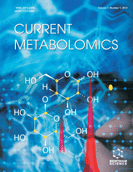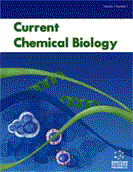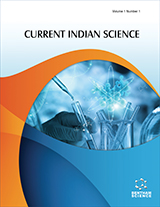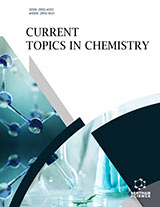Abstract
Background: Blood plasma/serum is a characteristic mixture of naturally occurring endogenous fluorophores which are sensitive to endogenous and exogenous stress during physiological as well as pathological processes in the body.
Methods: The structure of the patient's blood plasma/serum surfaces with critical limb ischemia and healthy subjects were studied and compared using methods of synchronous fluorescence fingerprint and atomic force microscopy, which are usually not used in clinical practice. The molecules of IGF-2, HIF-1 and VEGF-A in the blood vessels of patients with a critical ischemic limb during the surgery were analyzed by qRT-PCR and electrophoretic detection.
Results: Angiogenesis and also ischemia were detected in the ischemic blood vessels tissue of patients as a significant increased expression of mRNA levels of HIF-1 and VEGF-A genes in comparison with healthy subjects. The increased fluorescence intensity of proteins at wavelength λ = 280 nm/Δ60 nm was observed in the blood plasma/serum of patients. The fluorescence spectroscopy and atomic force microscopy revealed that the ischemic blood plasma and serum contains changed structures of proteins.
Conclusion: Spectroscopic signals can study ischemic changes and these can generally predict morphological changes in the blood plasma/serum. Atomic force microscopy investigated structural changes of proteins in the blood plasma/serum. Methods of molecular analysis detected significant hypoxia in the blood tissue as significant increase of HIF-1 molecule and simultaneously significant angiogenesis as a significant increase of VEGF-A molecules. New nontraditional techniques may contribute to early diagnosis of the various vascular diseases in patients in future.
Keywords: Angiogenesis, atomic force microscopy, blood serum and plasma, critical limb ischemia, endogenous stress factors, hypoxia, proteins, qRT-PCR, synchronous fluorescence spectroscopy.
Graphical Abstract
Current Metabolomics
Title:Expression Activity of Selected Proangiogenic Factors in Patients with Limb Ischemia
Volume: 6 Issue: 1
Keywords: Angiogenesis, atomic force microscopy, blood serum and plasma, critical limb ischemia, endogenous stress factors, hypoxia, proteins, qRT-PCR, synchronous fluorescence spectroscopy.
Abstract: Background: Blood plasma/serum is a characteristic mixture of naturally occurring endogenous fluorophores which are sensitive to endogenous and exogenous stress during physiological as well as pathological processes in the body.
Methods: The structure of the patient's blood plasma/serum surfaces with critical limb ischemia and healthy subjects were studied and compared using methods of synchronous fluorescence fingerprint and atomic force microscopy, which are usually not used in clinical practice. The molecules of IGF-2, HIF-1 and VEGF-A in the blood vessels of patients with a critical ischemic limb during the surgery were analyzed by qRT-PCR and electrophoretic detection.
Results: Angiogenesis and also ischemia were detected in the ischemic blood vessels tissue of patients as a significant increased expression of mRNA levels of HIF-1 and VEGF-A genes in comparison with healthy subjects. The increased fluorescence intensity of proteins at wavelength λ = 280 nm/Δ60 nm was observed in the blood plasma/serum of patients. The fluorescence spectroscopy and atomic force microscopy revealed that the ischemic blood plasma and serum contains changed structures of proteins.
Conclusion: Spectroscopic signals can study ischemic changes and these can generally predict morphological changes in the blood plasma/serum. Atomic force microscopy investigated structural changes of proteins in the blood plasma/serum. Methods of molecular analysis detected significant hypoxia in the blood tissue as significant increase of HIF-1 molecule and simultaneously significant angiogenesis as a significant increase of VEGF-A molecules. New nontraditional techniques may contribute to early diagnosis of the various vascular diseases in patients in future.
Export Options
About this article
Cite this article as:
Expression Activity of Selected Proangiogenic Factors in Patients with Limb Ischemia, Current Metabolomics 2018; 6 (1) . https://dx.doi.org/10.2174/2213235X04666161013122044
| DOI https://dx.doi.org/10.2174/2213235X04666161013122044 |
Print ISSN 2213-235X |
| Publisher Name Bentham Science Publisher |
Online ISSN 2213-2368 |
 27
27 3
3Related Articles
-
Histamine and Histamine Receptor Antagonists in Cancer Biology
Inflammation & Allergy - Drug Targets (Discontinued) The Pleiotropic Effects of PPARs on Vascular Cells and Angiogenesis: Implications for Tissue Engineering
Current Stem Cell Research & Therapy Dendritic Cells in Atherosclerosis
Current Pharmaceutical Design Arterial Dilatation-Related Diseases: The Prerequisite Condition of Arterial Elastic Tissue Damage and Endovascular Treatment
Recent Patents on Medical Imaging Polyunsaturated Fatty Acids in Pregnancy and Metabolic Syndrome: A Review
Current Pharmaceutical Biotechnology PDE-5 Inhibitors: Clinical Points
Current Drug Targets Targeting the Akt Kinase to Modulate Survival, Invasiveness and Drug Resistance of Cancer Cells
Current Medicinal Chemistry Genetically Modified Endothelial Progenitor Cells in the Therapy of Cardiovascular Disease and Pulmonary Hypertension
Current Vascular Pharmacology Recent Advances in Endocrine Metabolic Immune Disorders Drug Targeting: An Editorial Overview
Endocrine, Metabolic & Immune Disorders - Drug Targets Metabolic Syndrome and Cardiometabolic Risk Factors
Current Vascular Pharmacology Cellular and Physiological Effects of Short-Chain Fatty Acids
Mini-Reviews in Medicinal Chemistry Is there a Relationship between Endothelial Dysfunction of the Brachial Artery, Carotid Intima-Media Thickness and Soluble Receptors of Tumor Necrosis Factor-Alpha?
Vascular Disease Prevention (Discontinued) The Association of Folic Acid Deficiency and Diabetic Nephropathy in Patients with Type 2 Diabetes Mellitus
Endocrine, Metabolic & Immune Disorders - Drug Targets Isolated Systolic Hypertension: Epidemiology, Pathogenesis and Treatment
Current Hypertension Reviews The Genetic Basis of Sleep Disorders
Current Pharmaceutical Design DNA and RNA Aptamers: From Tools for Basic Research Towards Therapeutic Applications
Combinatorial Chemistry & High Throughput Screening Supplementation with Oligonol, Prevents Weight Gain and Improves Lipid Profile in Overweight and Obese Saudi Females
Current Nutrition & Food Science Vulnerable Plaque Versus Vulnerable Patient: Emerging Blood Biomarkers for Risk Stratification
Endocrine, Metabolic & Immune Disorders - Drug Targets Nonviral Gene Therapy and its Delivery Systems
Current Pharmaceutical Biotechnology Mandatory Reporting of Coronary Artery Calcifications Incidentally Noted on Chest Multi-Detector Computed Tomography: A Multicentre Experience
Current Vascular Pharmacology









.jpeg)








